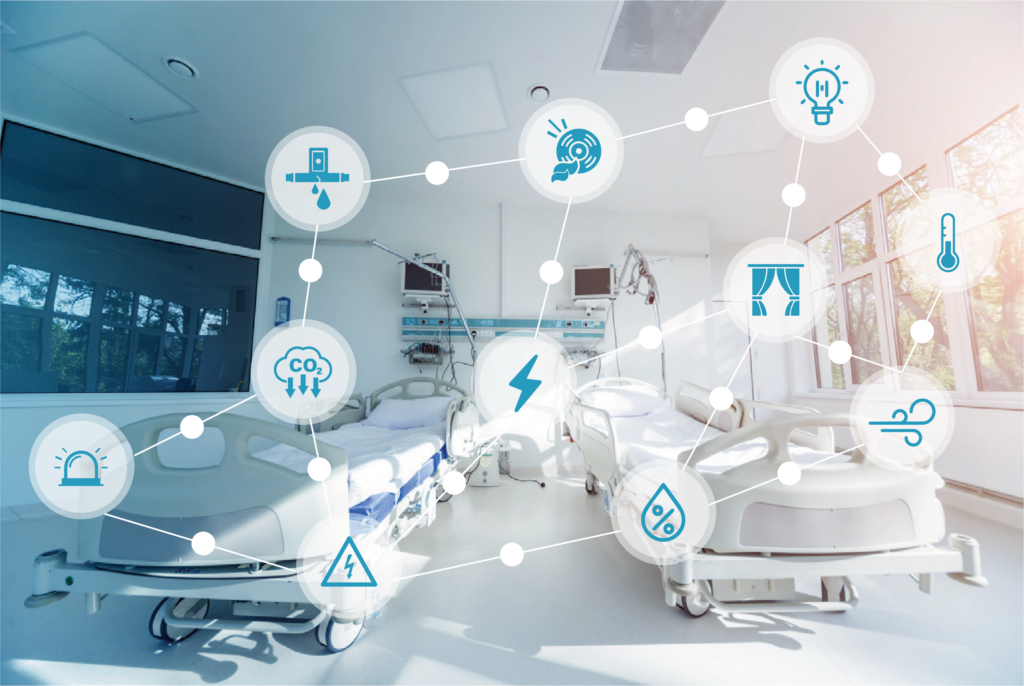
Transforming Healthcare with Smart Building Solutions
Introduction
The healthcare industry is undergoing constant evolution, and one of the latest advancements in this field is the integration of smart building solutions. These solutions have the potential to revolutionize healthcare facilities by improving patient experience, optimizing operational efficiency, and enhancing infection control. This article explores the relevance and importance of integrating smart building solutions in healthcare, along with their historical background and key concepts. Additionally, it discusses the main benefits and challenges of implementing these solutions, provides case studies to illustrate their impact, and speculates on the future implications of smart building solutions in healthcare.
Historical Background
To understand the significance of smart building solutions in healthcare, it is crucial to have a brief overview of the historical evolution of healthcare infrastructure. Over the years, healthcare facilities have transitioned from basic buildings to complex structures that cater to a wide range of medical needs. However, traditional healthcare infrastructure often faces challenges in terms of patient experience, operational efficiency, and infection control. The introduction of smart building solutions has opened up new possibilities to effectively address these challenges.
Key Concepts and Definitions
Before delving into the main discussion points, it is essential to define smart building solutions in the context of healthcare. Smart building solutions refer to the integration of various technologies and systems to create intelligent and efficient healthcare facilities. Some key terms and concepts related to smart building solutions include the Internet of Things (IoT) in healthcare facilities, building automation systems, energy management systems, and patient tracking and monitoring technologies. These concepts play a crucial role in enhancing patient experience, optimizing operational efficiency, and improving infection control in healthcare settings.
![]()
Main Discussion Points
Enhancing Patient Experience and Safety
One of the key benefits of integrating smart building solutions in healthcare is the enhancement of patient experience and safety. By incorporating these solutions, healthcare facilities can improve patient comfort and satisfaction. For instance, the integration of IoT sensors enables real-time monitoring of patient vital signs, ensuring an immediate response to emergencies. Additionally, the implementation of wayfinding technologies helps patients navigate within healthcare facilities more efficiently, reducing stress and improving the overall experience.
Optimizing Operational Efficiency and Resource Management
Smart building solutions also contribute to the optimization of operational efficiency and resource management in healthcare facilities. By adopting energy management systems, healthcare organizations can reduce energy consumption and their carbon footprint. Predictive maintenance and asset management systems play a crucial role in optimizing facility maintenance and minimizing downtime. Furthermore, the utilization of occupancy sensors and space utilization analytics helps healthcare facilities make better use of available spaces.
Enhancing Infection Control and Preventing Healthcare-Associated Infections
Another significant benefit of smart building solutions is the enhancement of infection control and prevention of healthcare-associated infections. By integrating smart HVAC systems and ventilation controls, healthcare facilities can improve air quality and reduce the transmission of airborne pathogens. The implementation of touchless technologies and automated disinfection systems minimizes the spread of infections. Additionally, real-time location systems (RTLS) enable effective sterilization protocols by tracking and monitoring the movement of medical equipment.

Case Studies or Examples
To illustrate the impact of smart building solutions in healthcare, let’s consider two case studies. One example is XYZ Hospital, which implemented smart building solutions resulting in improved patient outcomes and operational efficiency. The integration of these solutions led to enhanced patient experience and safety through real-time monitoring and improved wayfinding. Another example is ABC Medical Center, which integrated IoT and patient tracking technologies to improve patient experience and safety by enabling accurate and efficient tracking of patients within the facility.
Current Trends or Developments
The adoption of smart building solutions in healthcare is witnessing several current trends and developments. Healthcare facilities are increasingly integrating these solutions to enhance patient care and optimize operations. Research findings highlight the benefits of implementing smart building solutions, such as improved patient outcomes, increased energy efficiency, and enhanced infection control. However, challenges and barriers to widespread adoption still exist and need to be addressed.
Challenges or Controversies
Identifying and addressing challenges and controversies is crucial for the successful implementation of smart building solutions in healthcare. Some of the challenges include high implementation costs, interoperability issues, and concerns regarding data privacy and security. Additionally, differing viewpoints exist regarding the impact of smart building solutions on healthcare stakeholders. It is important to consider these perspectives and find ways to mitigate challenges and controversies.

Future Outlook
Looking ahead, the future of smart building solutions in healthcare holds immense potential for advancements. With emerging technologies on the horizon, such as artificial intelligence and blockchain, healthcare facilities can expect further integration and innovation. These advancements have the potential to revolutionize patient care, operational efficiency, and infection control in healthcare settings.
Conclusion
In conclusion, the integration of smart building solutions in healthcare has the potential to transform the industry. By enhancing patient experience and safety, optimizing operational efficiency and resource management, and improving infection control, these solutions offer numerous benefits to healthcare facilities. Case studies demonstrate their positive impact, while current trends and developments provide insights into their widespread adoption. However, challenges and differing viewpoints need to be addressed to fully leverage the potential of smart building solutions. The future of healthcare with smart building solutions looks promising, with emerging technologies poised to bring about even more advancements.




